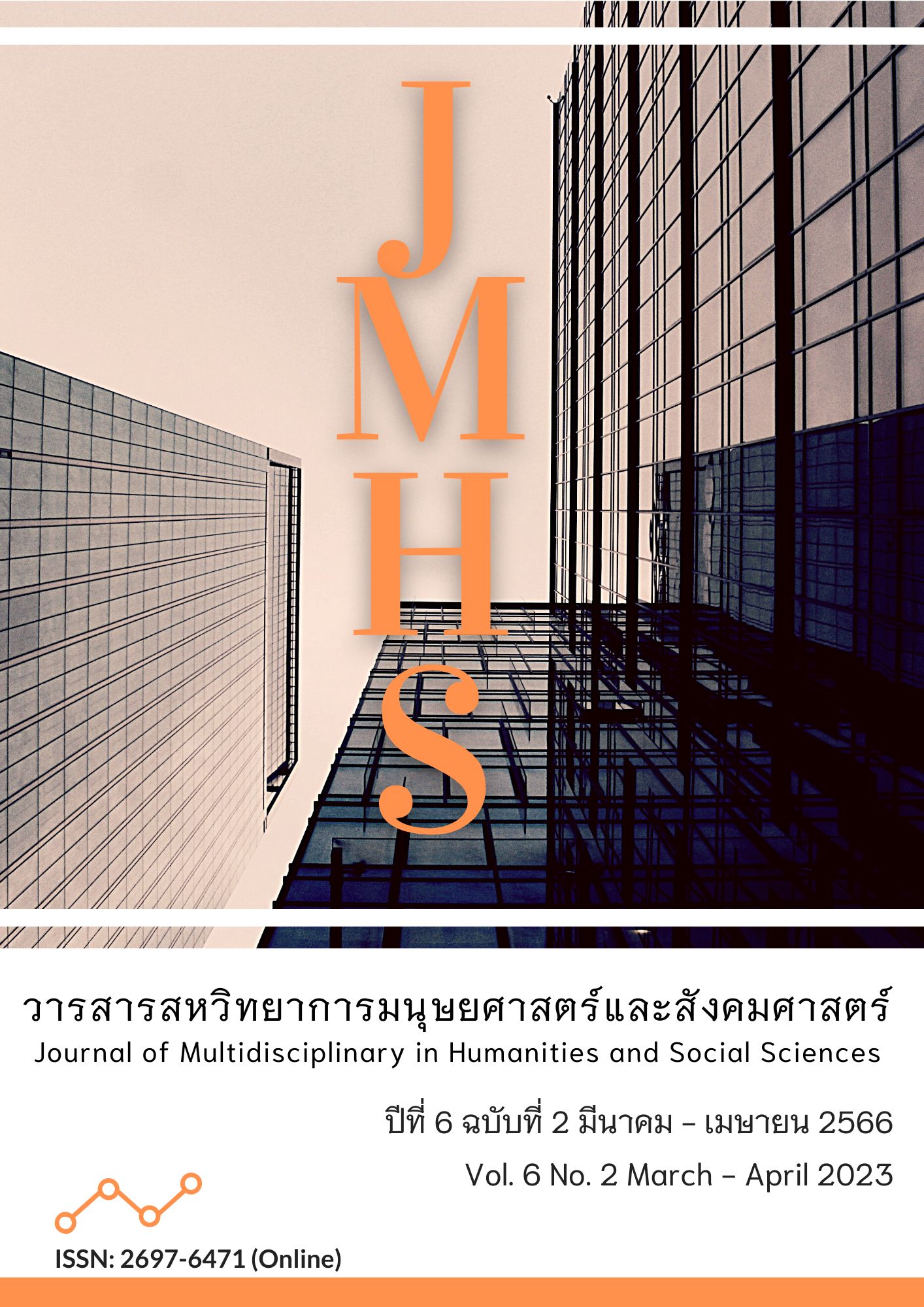การใช้อำนาจอธิปไตยในโลกไซเบอร์
Main Article Content
บทคัดย่อ
บทความนี้มีวัตถุประสงค์เพื่อวิเคราะห์อำนาจอธิปไตยทางไซเบอร์ โดยเริ่มต้นอธิบายพื้นฐานความเข้าใจเรื่องอำนาจอธิปไตยที่นำไปสู่การประยุกต์ใช้ในโลกไร้พรมแดน นอกจากนี้ในบทความได้ถอดบทเรียนจากนโยบายการรับมือภัยคุกคามไซเบอร์ของประเทศต่าง ๆ เพื่อขจัดปัญหาการรุกล้ำอำนาจอธิปไตยทางไซเบอร์ที่จะเกิดขึ้นในประเทศไทย โดยบทสรุปจะมีข้อเสนอแนะทางนโยบายเพื่อเป็นประโยชน์ต่อภาครัฐ บทความนี้มาจากการศึกษาแนวคิดทฤษฎี การทบทวนวรรณกรรม และบทสัมภาษณ์ของผู้เกี่ยวข้อง ประเด็นเหล่านี้ไม่ใช่เรื่องใหม่แต่เป็นการทวีคูณความรุนแรงของปัญหาในโลกแห่งไซเบอร์ เมื่ออำนาจรัฐและเทคโนโลยีผนวกเข้าด้วยกัน เกิดเป็นมิติใหม่ของสนามรบที่อาจคาดไม่ถึง โลกแห่งไซเบอร์คู่ขนานไปกับโลกแห่งความจริงทำให้รัฐบาลของประเทศต่าง ๆ ไม่สามารถรับมือภัยคุกคามได้อย่างเต็มที่ การใช้กฎหมายภายในประเทศจับกุมคนกระทำความผิดทางไซเบอร์ แม้แต่การเรียกร้องความเป็นธรรมจากองค์กรสหประชาชาติหรือการใช้กฎหมายระหว่างประเทศอาจจะยังไม่ใช่คำตอบที่ดีที่สุดสำหรับการจัดการกับภัยคุกคามไซเบอร์ เพื่อที่จะป้องกันการแทรกแซงอำนาจรัฐในโลกไซเบอร์ บทความนี้ได้ให้คำตอบเพื่อเป็นแนวทางการศึกษาค้นคว้าต่อไป
Article Details

อนุญาตภายใต้เงื่อนไข Creative Commons Attribution-NonCommercial-NoDerivatives 4.0 International License.
ทัศนะและความคิดเห็นที่ปรากฏในวารสาร ถือเป็นความรับผิดชอบของผู้เขียนบทความนั้น และไม่ถือเป็นทัศนะและความรับผิดชอบของกองบรรณาธิการ
เอกสารอ้างอิง
เดชชาติ วงศ์โกมลเชษฐ์. (2515). หลักรัฐศาสตร์. (พิมพ์ครั้งที่ 8). กรุงเทพฯ: โรงพิมพ์สมาคมสังคหศาสตร์แห่งประเทศไทย.
Betts, A. (2009). Sovereignty and the State System. Forced Migration and Global Politics, 2(3), 43-45.
Brown, G.D. (2013). The Wrong Questions About Cyberspace. The Newly Formed United States Cyber Command, 1(217), 214-233.
Chachavalpongpun, P. (2022). Nationhood in the Cloud: Cyber Sovereignty in Thailand, Retrieved October 31, 2022, from https://doi.org/10.1080/10357823.2022.2109591
Corn, G., & Taylor, R. (2017). Sovereignty in the Age of Cyber. AJIL Unbound, 1(111), 207-212.
Egan, B. (2016). Legal Adviser, U.S. Dep’t of State. International Law and Stability in Cyberspace, 1(35), 169-180.
Encyclopedia Britannica. (2019). Britannica. Retrieved September 24, 2022, from https://web.archive.org/web/20061020084752//corporate.britannica.com/company_info.html
Electronic Transactions Development Agency [ETDA]. (2018). การรักษาความมั่นคงปลอดภัยของโครงสร้างพื้นฐานสำคัญ. Retrieved December 24, 2022, from https://www.etda.or.th/th/Useful-Resource/documents-for-download/ETDA-Annual-Report-2018.aspx
Hare, F. (2009). Borders in Cyberspace: Can Sovereignty Adapt to the Challenges of Cyber Security?. Retrieved October 22, 2022, from https://ccdcoe.org/uploads/2018/10/06_HARE_Borders-in-Cyberspace.pdf
Humber, K. (2019). Crimean Tatars and the Politics of Sovereignty: Small State Instrumentalization of Ethnic Minority Sovereignty Claims in Geopolitically Disputed Territory(Doctoral dissertation). University of British Columbia.
Irshaid, F. (2016). How ISIS Is Spreading Its Message Online. Retrieved September 15, 2022, from https://www.bbc.com/news/world-middle-east-27912569
ITU. (2020). Organizations and Institutions that Address International Cybersecurity. Retrieved October 22, 2022, from https://www.itic.org/dotAsset/c/c/cc91d83a-e8a9-40ac-8d75-0f544ba41a71.pdf
Jamnejad, M., & Wood, M. (2009). The Principle of Non-intervention. Leiden Journal of International Law, 22(2), 345-381.
Joel, R. (1996). “Governing Networks and Rule-Making in Cyberspace”. Emory Law Journal, 45(2), 928-950.
Johnson, D.R., & Post, D. (1996). Law and Borders: The Rise of Law in Cyberspace. Stanford Law Review, 48(5), 1367–1402.
Liaropoulos, A. (2013). Exercising State Sovereignty in Cyberspace: An International Cyber-Order under Construction?. Retrieved September 20, 2022, from https://www.researchgate.net/publication/287453182_Exercising_state_sovereignty_in_cyberspace_An_international_cyber-order_under_construction
Lindsay, J. (2015). Engagement Without Recognition: The Limits of Diplomatic Interaction with Contested States. International Affairs, 91(2), 267-285.
Petchkla, N. (2022). Government Sector’s Response in Counter-Cyberterrorism in Thailand. International Journal of Crime, Law and Social Issues, 9(2), 1-14.
Roscini, M. (2015). Evidentiary Issues in International Disputes Related to State Responsibility for Cyber Operations. Texas International Law Journal, 50(2-3), 233-274.
Schmitt, M. (2016). US Transparency Regarding International Law in Cyberspace, JUST SECURITY. Retrieved November 25, 2022, from https://www.justsecurity.org/34465/transparency-international-law-cyberspace/
Segal, A. (2020). China’s Vision for Cyber Sovereignty and the Global Governance of Cyberspace. Retrieved September 14, 2022, from https://www.nbr.org/publication/chinasvision-for-cyber-sovereignty-and-the-global-governance-of-cyberspace/
Sherman, J. (2019). How Much Cyber Sovereignty is Too Much Cyber Sovereignty?. Retrieved November 5, 2022, from https://www.cfr.org/blog/how-much-cyber-sovereignty-too-much-cyber-sovereignty
Tavenner, E. (2022). Russian Cyber Sovereignty: Global Implications of an Authoritarian RuNet. Retrieved November 25, 2022, from https://www.american.edu/sis/centers/security-technology/russian-cyber-sovereignty.cfm
The Cabinet Office. (2020). The UK Cyber Security Strategy Protecting and Promoting the UK in a Digital World. Retrieved October 16, 2022, from https://assets.publishing.service.gov.uk/government/uploads/system/uploads/attachment_data/file/60961/uk-cyber-
security-strategy-final.pdf
Weber, V. (2020). The Sinicization of Russia’s Cyber Sovereignty Model. Retrieved May 31, 2022, from https://www.cfr.org/blog/sinicization-russias-cyber-sovereignty-model


